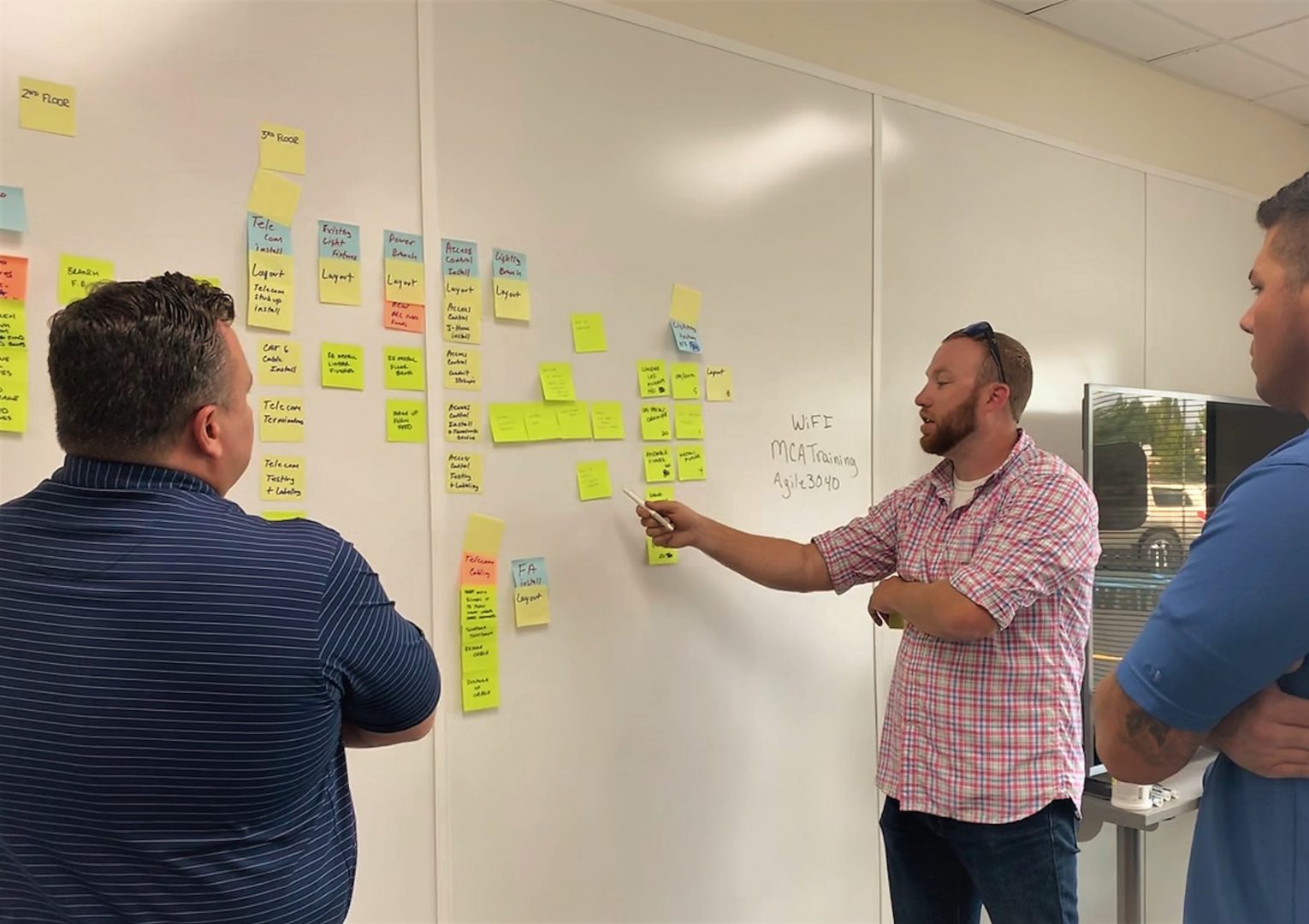The Basics Of WBS (Work Breakdown Structure)

One of the foundations to Agile Construction® and, really, where the rubber meets the road is with WBS or Work Breakdown Structure. When it comes to measuring productivity, job tracking, etc. there is an incredible amount of confusing information flooding the market.
Most contractors still use the old school method of “throw it over the wall” and let the next guy deal with it. This type of project management method will only lead to a wide range of variance when it comes to project performance. One job may make 30% and the next may lose 40%. “This is just the nature of the industry” is what is commonly used as an excuse. Others have begun to incorporate labor codes into the estimate and track number of hours available vs. number of hours burned. While this is a step in the right direction, it is still light years away from truly measuring and improving the productivity of your field labor.
Agile Construction® methodologies and tools are recognized by ASTM as the only correct way of measuring and improving productivity in construction. One of the cornerstones of that methodology is incorporating a Work Breakdown Structure or WBS into your process.
WBS, when used correctly will tell you prior to the project even breaking ground whether there are early warning signals or whether you are in good shape. The key is that the information is coming from the field, not from the PM or the estimator! Let’s take a look at some of the basics.
Work: WBS is applicable to any kind of work, large, small, simple, or complex. Use it to see any kind of work that you have to do.
Breakdown: Divide work into progressively smaller units until each task meets the “Goldilocks Test”: not too big to easily understand, see, and track, and not too small to create excessive “paperwork” that provides no additional value.
Structure: Tasks do not exist in isolation; they relate to one another and are part of a structure. Some tasks progress in a sequence; others belong to the same physical subdivision of a building; still others may belong to a common subsystem, etc. In fact, usually tasks belong to several structures at the same time.
Start with Sticky Notes
It is not necessary to know the structure(s) that will frame your WBS to get started. Simply take a pad of sticky notes and a blank wall. Start by writing down the pieces of the job as you understand it. Use action verbs! Dig, demolish, set up, move, assemble, install, pull, connect, or test things.You can start with “big pieces” (a top-down approach) and stick them nearer the top of the wall. But you can also start with a bottom-up approach with “little pieces”, putting them near the bottom of the wall. Starting in the middle is okay, too. This is basically a brainstorming session. As you progress, you will find that groups of sticky notes will naturally seem to go together. As soon as you form a group, you are starting to see “structure”.
Maybe your group needs a sticky note just above with a more general description. This is called a “summary task” or a “parent task.” Congratulations! You have just created your first piece of structure.
As you progress, you will form more groupings and structure. However, you may find yourself re-thinking that structure. Perhaps you started grouping tasks by the subsystem they belong to, like switchgear, lighting, and fire alarms. But then you may feel that because of the way the sequence of work will occur that re-grouping by building floors or areas might make more sense. No problem! Just move the sticky notes around. If you do not like the result, it can always be changed again later.
Keep dividing and/or grouping until you feel that you can see the whole job in enough detail to see (this can be taken literally; if you have to report progress periodically, create tasks that you can assess easily). And avoid too much detail that will weigh you down. Again, this is the Goldilocks Test.
A Place for Everything and Everything in its Place
How do you know if your WBS is in good shape? Consider the following questions:
Any there any orphan sticky notes, those without a parent? Of course, the overall job sticky note at the top is the exception; but every other task needs to belong.
Is your sticky note “tree” extremely short-and-wide, or tall-and-narrow? Short-and-wide suggests possibly too many categories; can some categories be combined? Tall-and-narrow suggests perhaps too much detail; can parent and child tasks be combined naturally and still be visible? Is it clear where every task belongs? If someone walked up to your WBS and looked for a particular part of the job, would it be obvious where to find it?
Is there more than one place that the same task would seem to fit? This may suggest that the categories overlap. What we want to achieve is referred to as “mutual exclusivity”, meaning each thing only goes in one place.
Are there “gaps” in your WBS? Did you allow for planning/meetings, supervision, mobilization/demobilization, demolition, temporary power install/removal, material handling, commissioning/testing, and/or safety? Once again, the fancy word for this is “all inclusivity”
Once you have mastered the art of creating a WBS, you will have a tool that can be applied everywhere to ensure that the job to be done is fully understood, and progress toward completion is easily seen.
